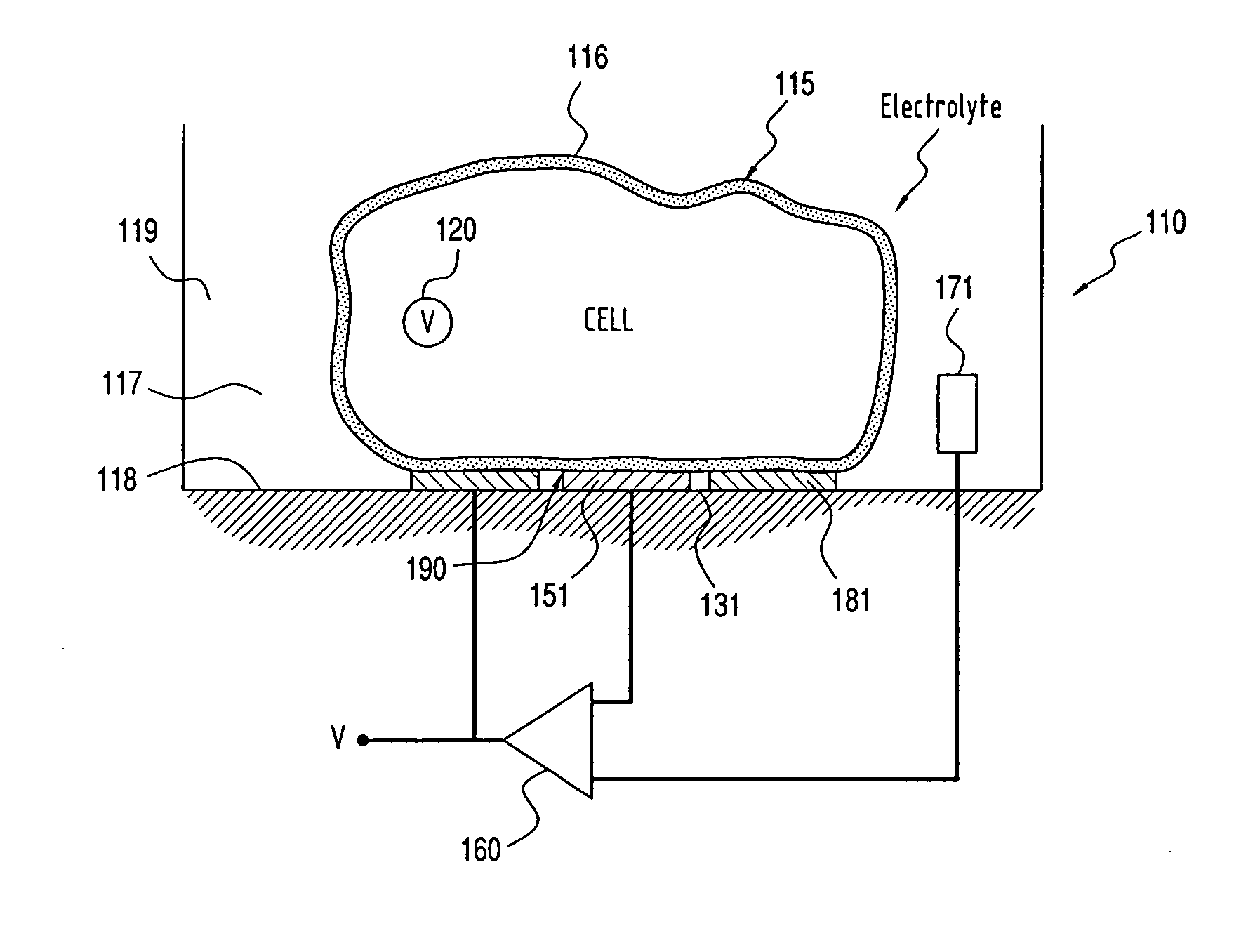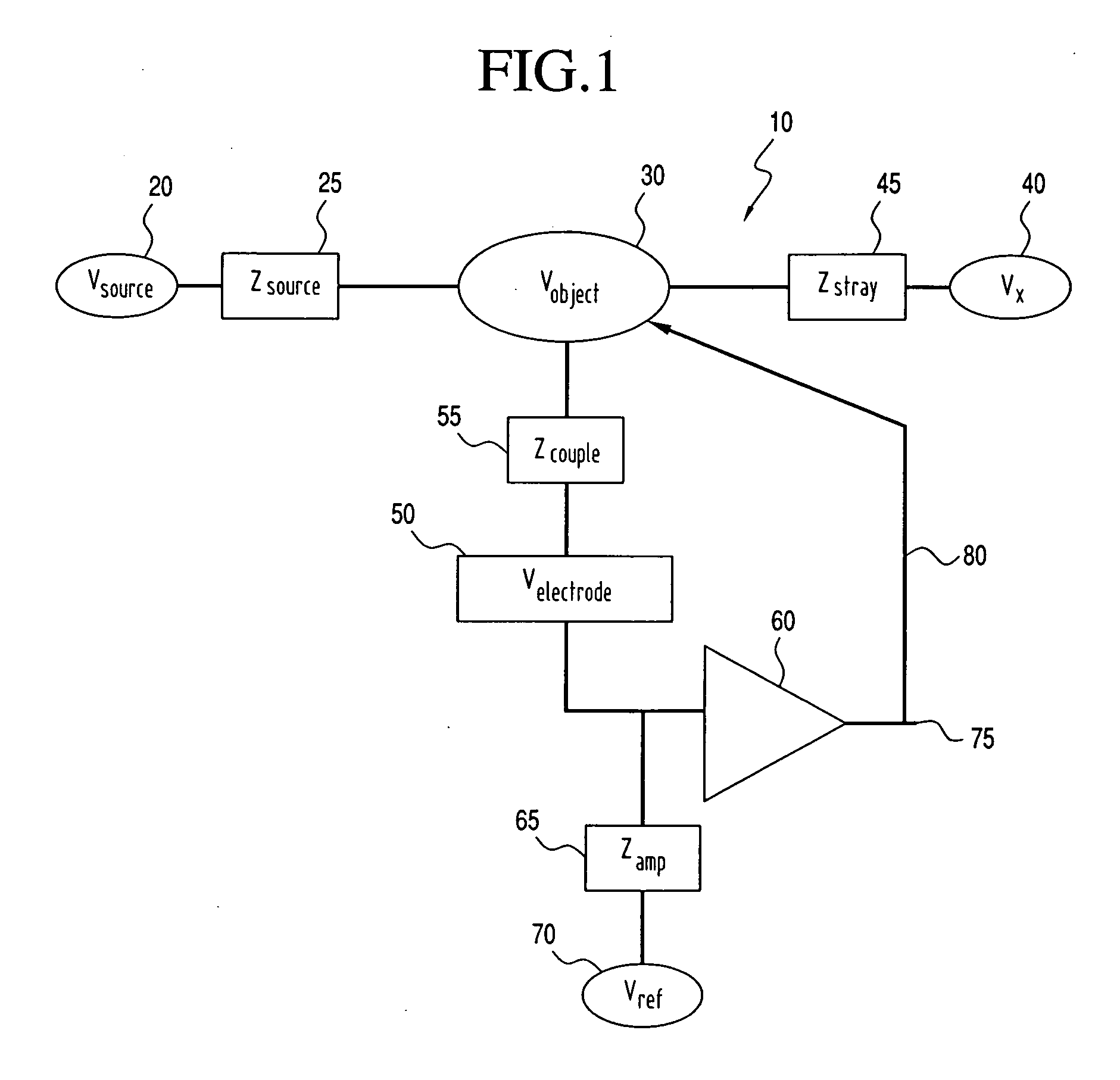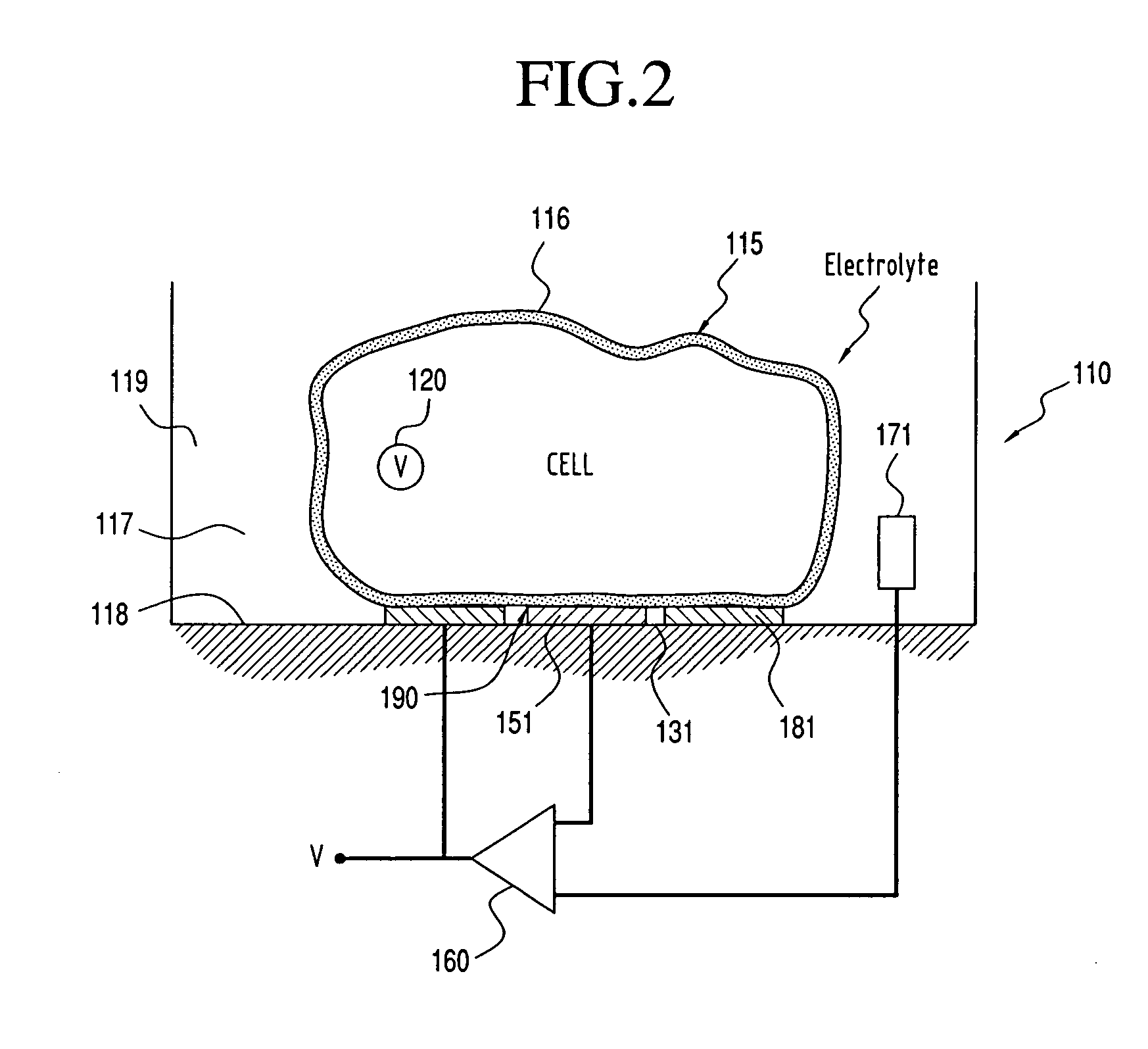System for Measuring the Electric Potential of a Voltage Source
a voltage source and electric potential technology, applied in the direction of ac/dc measuring bridges, instruments, material impedance, etc., can solve the problems of laborious, difficult, and laborious, and achieve the effect of maximizing impedance, improving electrical potential measurement, and less sensitive to stray coupling
- Summary
- Abstract
- Description
- Claims
- Application Information
AI Technical Summary
Benefits of technology
Problems solved by technology
Method used
Image
Examples
Embodiment Construction
[0020]With initial reference to FIG. 1, the basic elements of the measurement problems to be addressed according to the invention is schematically shown at 10. A voltage source 20 producing voltage having a value Vsource is shown with an associated impedance 25 having a value Zsource. An object 30 has a voltage Vobject due to coupling to source 20. The “object” means a region of approximately equal electric potential, the boundaries of which are set by the physical configuration of the measurement problem. Object 30 could be a charged body, or could be a body of material held at a voltage via capacitive coupling to a local potential. In one case, where the ultimate goal is to measure Vsource, one may be constrained by the physical aspects of the problem to measuring the voltage Vobject of object 30. For example, one may desire to measure the internal potential of a cell via an external electrode as in the work of
[0021]Fromherz et al., and object 30 could be the boundary layer of pro...
PUM
 Login to View More
Login to View More Abstract
Description
Claims
Application Information
 Login to View More
Login to View More - R&D
- Intellectual Property
- Life Sciences
- Materials
- Tech Scout
- Unparalleled Data Quality
- Higher Quality Content
- 60% Fewer Hallucinations
Browse by: Latest US Patents, China's latest patents, Technical Efficacy Thesaurus, Application Domain, Technology Topic, Popular Technical Reports.
© 2025 PatSnap. All rights reserved.Legal|Privacy policy|Modern Slavery Act Transparency Statement|Sitemap|About US| Contact US: help@patsnap.com



